AMALGAM PRESS
The Amalgam Press is used wherever the process of amalgamation is practiced. The amalgam is wrapped in a wet chamois skin and inserted in the press, which extrudes the surplus amalgam. The press consists of a steel cylinder, slotted on the sides and perforated on the bottom. The steel piston is forced into the cylinder by a long machine screw driven by a convenient handwheel. Cylinder will hold approximately ten pounds of amalgam on each operation. Larger sizes furnished on demand. Shipping weight of press referred to is about 60 lbs.
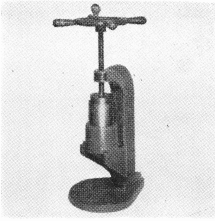
AMALGAM SEPARATOR
SEPARATION of mercury and amalgam from ground sulphides, after barrel amalgamation, is quickly and efficiently accomplished by the use of the Mercury Separator. Other material having different settling rates can also be split by this unit.
A carefully controlled upward flowing stream of water in a pyrex glass tube effects the separation. Velocity of the water can be visually controlled and regulated by the operator so that the lighter particles overflow the top and the heavier settle in a glass jar. As a protection, tube is set in steel frame. Recovery of mercury is practically complete. Separation time is a few minutes against hours by other methods.

AMALGAMATION BARREL
Amalgamation Barrel is used for batch grinding of gold concentrates and industrial materials. Originally it was developed for the gold milling industry, where it is used to grind concentrates from mineral jigs, concentrating tables, traps and blankets. When the high grade concentrates to be treated contain elements that foul the mercury, this barrel is recommended. Industrial materials Can be batch ground, either Wet or dry. Special lifter bars can be supplied for mixing purposes. Rubber liners may be furnished to reduce abrasion losses. Shell is replaceable.
Belt or motor drive can be supplied according to individual requirements. For amalgamation work a two speed motor drive is recommended, the high speed for the initial grinding operation and the low speed when the mercury is added.
The emptying and cleaning of this unit is greatly simplified by its distinctive design. Two clean-out doors are provided at opposite ends of the barrel, and an extra grate door arrangement allows the discharging of the unit while retaining the grinding medium.
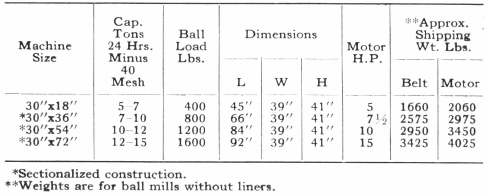
Wheeler Type AMALGAMATION CLEAN-UP PAN
The Clean-Up Pan has all the advantages of the arrastra and Wheeler Pans, and is designed for batch or continuous amalgamation treatment of high grade ore, flotation and table concentrates. Greater profits can be realized by removing all free metallics before a concentrate is shipped to the smelter.
In continuous operation, the slimes overflow at the weir and the heavier metallics settle to the bottom where they are wetted and absorbed by the mercury. The mineral values are ground and polished by heavy shoes which are dragged over a stationary die ring. Due to the design of this die ring the mercury is not actually ground with the pulp so there is little “flouring” and loss of mercury. The height of the shoes above the die ring is adjustable and they are easily replaced.
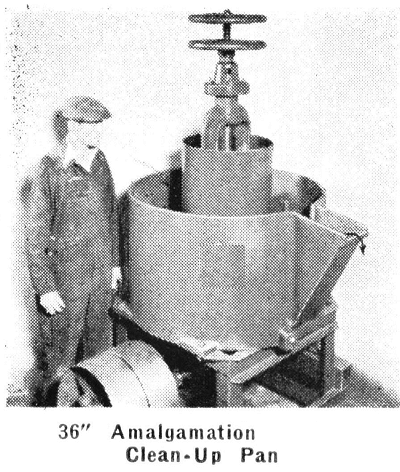
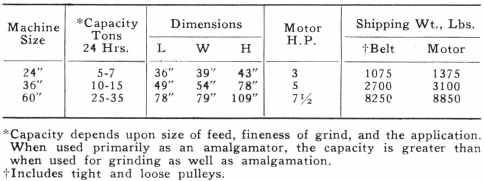
AMALGAMATION DRUM
Wherever free gold occurs in a heavy concentrate, whether from placer or milling operations, the Amalgamation Drum is the ideal machine to remove the gold in the form of amalgam, leaving a mineral-free tailing.
Ordinarily a single large ball is used and this grinds and amalgamates the mineral with the least possibility of flouring the mercury. A tilting device is arranged so that the slimes can be drained out while the drum is rotating. The concentrate is removed through a drain outlet located on the amalgam groove. This groove collects the mercury and holds the concentrate while the slimes are being discharged.
This amalgamation drum is very inexpensive and easy to operate. It should be used for the final clean up of gold concentrates from larger amalgamation operations in place of mortars and hand pans.


AMALGAMATION PLATE
Amalgamation Plates are made from the finest cold rolled annealed copper plate, approximately 1/8″ thick, with one, one and one- half or two ounces of silver plating per square foot. Heavier plating is apt to peel, and is not recommended.
Standard sizes are shown in the following table. These should be specified wherever possible as odd sizes necessitate extra cutting and a 10% increase in price.
All plates are carefully wrapped in blankets and then boxed to prevent damage in shipment. Shipping weight is approximately nine pounds per square foot.

AMALGAMATION UNIT
Amalgamation Unit has been developed to simplify and speed up the discharging and cleaning of concentrates after treatment in the Amalgam Barrel. The Unit consists of steel supporting framework on which is mounted the amalgam barrel with trunnions and drive, splash pans and amalgam separator. The complete Unit is used to regrind and amalgamate concentrates, and the usual practice consists of:
- The first period, ranging from 6 to 12 hours, is for regrinding the concentrates to free the gold from the ore or sulphides, as well as to thoroughly mix the pulp with any chemicals, such as lime, soda ash, caustic soda, or nitrates. This operation, to be most efficient, is conducted at a grinding speed, and usually requires no attention. It can be conducted on the amalgamator’s off-shift.
- The second step, which usually lasts from one to two hours, consists of first adding the mercury needed to amalgamate the gold and then running the barrel at approximately one-half the original grinding speed. The lower speed reduces the flouring of the mercury to a minimum. It is easily obtained by use of the two-speed motor supplied as standard.
- A grate is placed on one of the discharge openings and as the barrel is rotated the contents are drained out, aided by wash water introduced through the swivel water connection.
- In the Separator, the amalgam and mercury are removed from the gangue material. This separation is accurately performed by a carefully controlled upward flowing current of water, which the operator watches through the heavy glass tube of the separator. The amalgam and mercury drop into a container or locked receptacle for subsequent retorting and reduction to a gold and silver bullion bar.
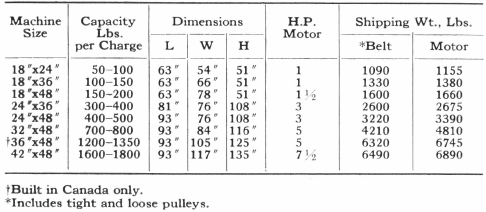
Pierce Type AMALGAMATOR
Amalgamators have been used for many years to remove free gold from placer sands, cyanide pulp, and from stamp or ball mill grindings.
The unit consists of numerous “L” shaped, annealed copper, silver plated, amalgamated riffles; so arranged that the water carrying the pulp or sand sweeps all the particles against the amalgamated surfaces repeatedly. The “L” shaped bottoms of the riffles contain quicksilver into which gold will sink by gravity.


